Sea Shells found along the Beach
As you wander along the beach, especially near the high-tide mark, you can hardly fail to see that there are millions of shells washed up by the tide. On closer inspection you will discover that there are dozens of different shells, some very common and some quite unusual. The shells on this page have all been found along the stretch of beach within the Countyside Park. They are the shells of Molluscs known as Gastropods and Bivalves. Some can be found living on the rocks or in the rock pools exposed at low tide. Others bury themselves in the sand so are less likely to be seen. Still more live further out to sea. Other aspects of seashore life are on our Seashore Life page.
Gastropods
Gastropods have a one-piece shell, with a large opening for the ‘foot’ which it uses to attach itself to rocks, move around and feed. They often feed on algae on the rocks.
Common Limpet
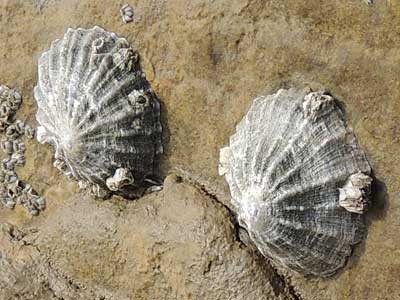
This limpet is found living on the rocks and groynes all along our shore.
Slipper Limpet
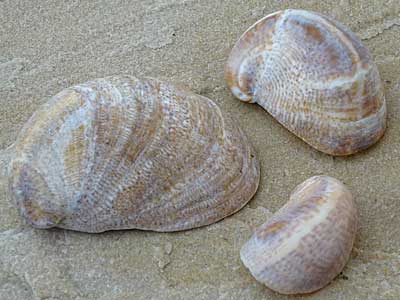
This is an alien species that out-competes several of our native molluscs.
Wentletrap
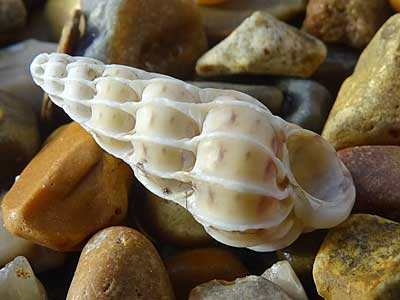
This shell is more usual along the western side of the UK and never grows to more than 4cm. Wentletrap is a dutch word meaning spiral staircase.
Common Whelk
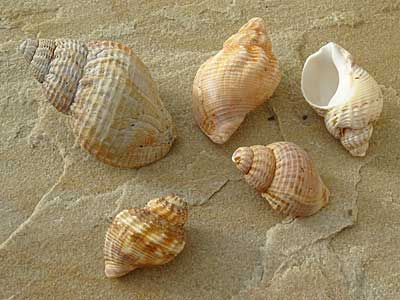
The Common Whelk shell is quite common along our shore but frequently damaged before they are washed up.
Dog Whelk
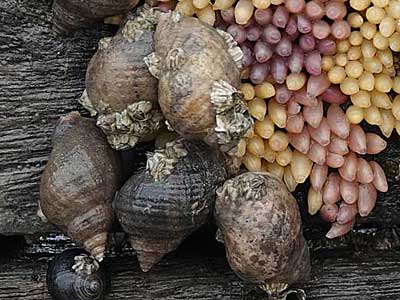
Much smaller than the Common Whelk, this gastropod is common in rockpools and often lays eggs on the groynes.
Netted Dog Whelk
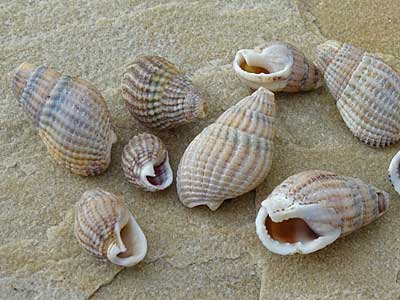
The smallest Whelk found on our beach (up to 3cm) these are common and identified by the net-like pattern on the shell.
Flat Top Shell
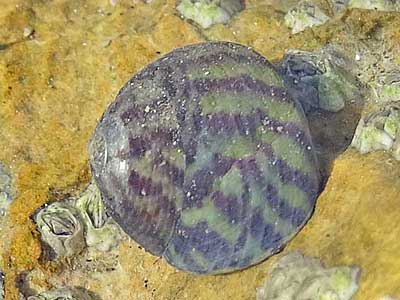
Found in our rockpools and recognised by its purple stripes running across the greenish whorls.
Common Periwinkle
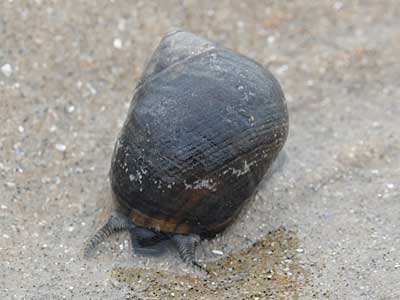
Common in our rockpools and can sometimes be found travelling across the sand at low tide.
Sting Winkle
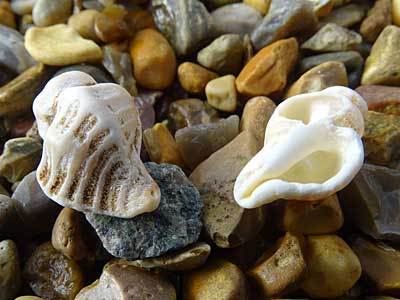
Also known as the Oyster Drill, it is a pest in Oyster beds. It bores through the oyster shell to reach its prey.
Bivalves
Bivalves have a hinged two-piece shell which they can close up, giving them some protection from predators. Many of them burrow into sand and they usually feed by siphoning nutrients from the water. Usually by the time they end up on the strandline the two halves have separated.
Common Cockle
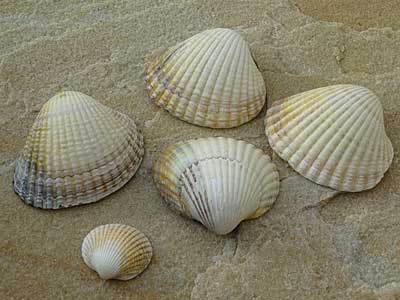
Commonly found along our shore the Common Cockle has only narrow grooves between the ridges.
Prickly Cockle
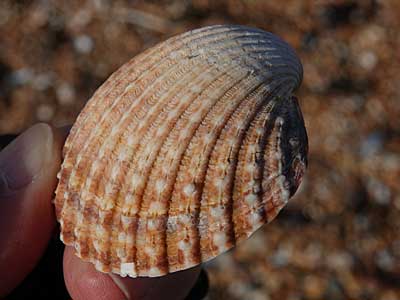
The Prickly Cockle is the most numerous shell along our stretch of shore, but the prickles are usually worn off by the time the shell gets washed up.
Common Mussel
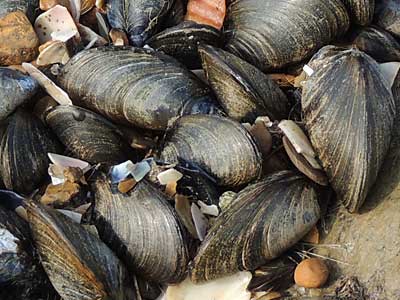
These are very common and can be seen growing on the rocks and groynes at low tide.
Great Scallop
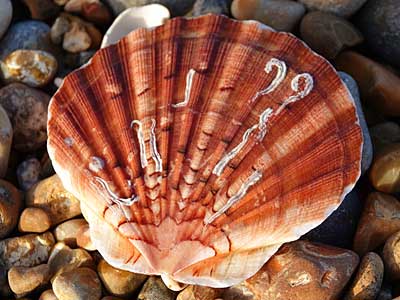
The largest of our native scallops, it can grow up to 16cm across. Some shells are a pale yellow.
Variegated Scallop
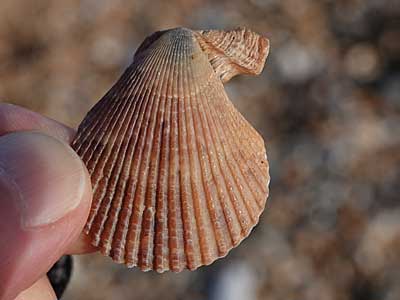
Much smaller than the Great Scallop, these are variable in colour, only grow to about 5cm across and have only one ‘ear’.
Queen Scallop
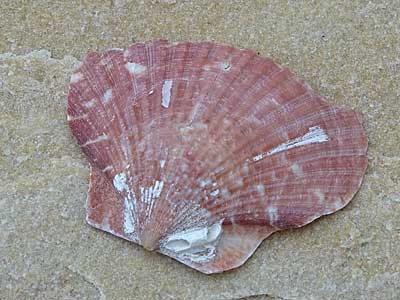
Only slightly larger than the Variegated Scallop, this has two ‘ears’ and a rather brittle shell.
Common Oyster
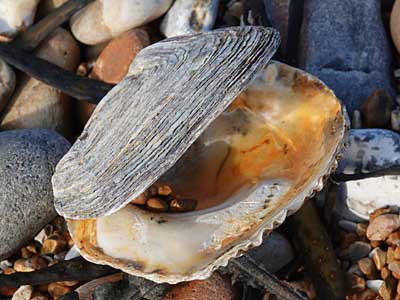
Our native oyster used to be very common, but has been over-harvested, leaving only depleted stocks.
Common Otter Shell
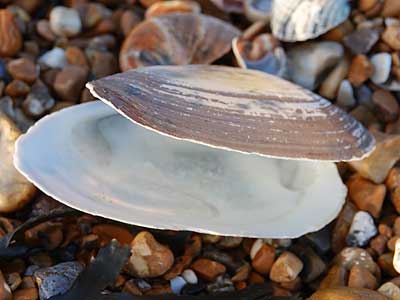
One of the largest shells, often up to 12.5cm long
White Piddock
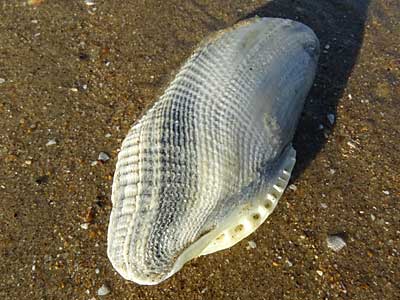
These burrow into soft rock and remain there after the animal has died until the rock erodes, as can be seen along our shore.
Pod Razor
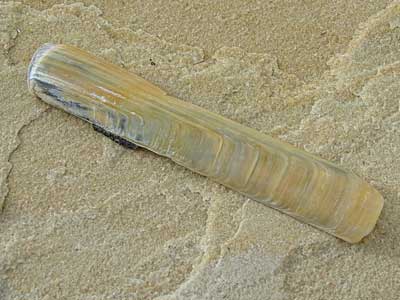
Razor shells burrow vertically into the sand and will go deeper if you walk near them.
Carpet Shell
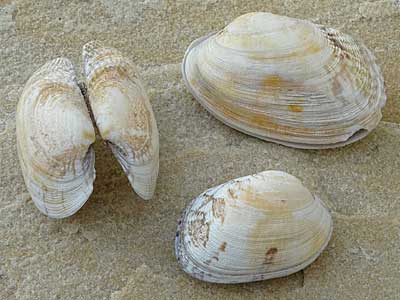
The concentric rings and radiating ridges, which are often quite worn in shells washed up, create a chequered appearance
Rayed Trough Shell
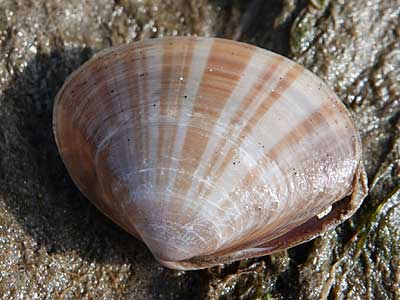
Identified by its pale radial stripes, this bivalve inhabits off-shore sandy bottoms.
Banded Wedge Shell
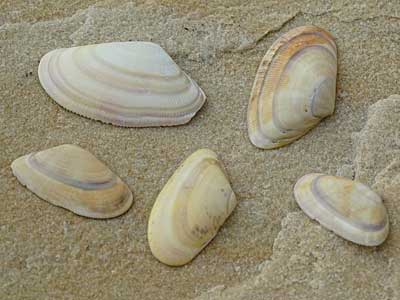
This little bivalve burrows into the sand and its shell is quite variable in colour but always has these characteristic longitudinal bands.
Other things you may see along the sea shore are shown on the Seashore Life page.
More Information
A good website for shell identification is at www.beachstuff.uk/identifying_shells.html
Photos on this page by Peter Hunnisett

